Table of Contents
ToggleWhat is account-based marketing?
Account-based marketing emphasizes on quality accounts rather than quantity of leads. Instead of trying to generate demand by casting a wide net, B2B companies that implement ABM target key accounts they want to sell to.
B2B marketing takes a broad approach to lead generation with the goal of capturing as many leads as possible. Marketers can then use technology to serve personalized messaging to decision-makers at these accounts on the channels they are actively using.
ABM helps your business work and communicate with high-value accounts as if they’re individual markets.
The ABM sales funnel also has four stages – Identify, expand, engage, convert.
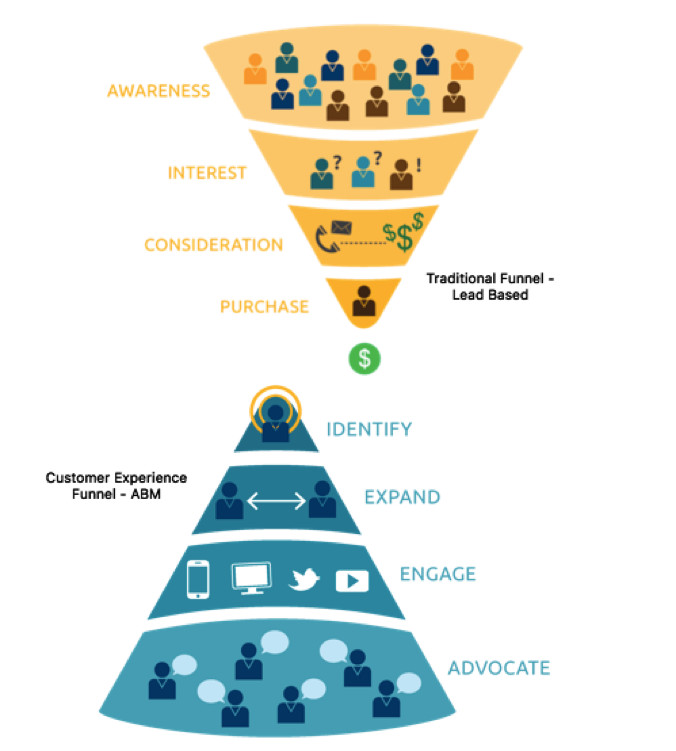
Traditional lead generation methods have too may junk leads, sales following up on leads are not qualified and expensive programs with little to show for. ABM helps organizations fix their pipeline problems. ABM helps to start small and focused, with the possibility of growing from there.
Benefits of Account-Based Marketing
The companies that are trying to see into large accounts with long sales cycles and large deal sizes account-based marketing benefits them over the type of marketing approaches.
Now when it comes to a business using marketing techniques, there are so many ways for them to increase their returns. ABM is a strategic approach that helps you cater to your marketing message to specific accounts that you feel fall right under your target audience.
1. An opportunity to get personal
The marketers create personalized messages for the target accounts, taking what they know about their customers and customize the creative assets of their campaign to the customer’s specific attributes and needs.
When approaching a specific account, it’s important to spend as much time and effort creating relevant content that provides value for your prospective customer.
As a business professional, you do not want to receive a sales call or a marketing email to kick off their research process. They want to explore solutions on their own terms and only receive communications from vendors when they’re meaningful and relevant.
2. Sales and Marketing Alignment
The first step of account-based marketing requires your sales and marketing teams to identify and agree on key accounts to target.
In terms of account-based marketing, this alignment will ensure your marketing and sales teams are focused on the same goals. This is primarily due to the fact that the marketer running an ABM program operates with a mindset very similar to sales.
This also then ensures that both the time and money spent by the respective teams are used in an effective way.
3. Clearer path to ROI
Through personalized ABM strategies, it has been observed to produce more ROI for B2Bs than anything else. ABM allows you to angle your business in a way that makes it the most-relevant and ideal option for your target accounts.
The approach makes it easier to align sales with marketing for consistent marketing that grows accounts.
4. Efficient Use Of Marketing Resources
This frees up resources that would previously have been wasted. The marketing efforts on major accounts create the most revenue in ABM.
You can integrate the sales and marketing efforts by making the teams work together to build successful communication.
With ABM being so targeted marketers focus on efficient use of the resources. And run marketing programs that are specifically optimized for target accounts.
5. Streamline the sales cycle
In account-based marketing, the length of the cycle is shortened as all prospects are nurtured simultaneously. The marketer spends more time on the stages of the cycle that positively impact your bottom line.
Sales and marketing teams can focus their energies solely on the accounts that are most likely to convert and provide more specialized services to those prospects and accounts.
6. Expand business through account relationships
ABM allows you to actively communicate how you can help them by providing quality information online. Clients are drawn to you for answers and when they find them, they learn to trust you.
The process involves significant time and resources in engaging and delighting a group of carefully chosen and high-value accounts with whom trying to quickly close deals with your company in the long run.
With personalized, thoughtful, and consistent customer experiences, accounts will become loyal to your business over time.
7. Tracking goals & measurement is clear
When you’re analyzing the effectiveness of campaigns, whether email, ads, web, or events, it’s easier to draw clear conclusions because you look at a smaller set of target accounts instead of a vast set of metrics.
8. Cost efficiency
Direct marketing to those accounts that have your business has targeted as prospects can be extremely cost-efficient. For those businesses that know exactly who their target customers are, ABM makes a tremendous amount of sense from a budget perspective.
Account-Based Marketing and Inbound Marketing
There are several divergences between the two marketing approaches. While ABM is a proven strategy for enterprise deals, inbound is a proven strategy for small and medium-sized business deals.
Inbound vs. Account-Based Marketing

- The sales funnel
The ABM strategies begin with a clear focus on a set of customer accounts, while the inbound practices start by addressing large audiences with the purpose to attract, engage, and convert users. ABM marketers gain a deep understanding of their target accounts in order to create content and campaigns optimized for them.
- The ROI
It is comparatively easier to track the ROI for the ABM technique of marketing. ABM campaign can be measured easily due to the clear outcomes resulting in sales, closed deals, and revenues.
- The outcomes
ABM focuses on quality, aiming to produce fewer new business opportunities that are worth far more. You additionally have more control over when the prospect converts.
Inbound marketing can produce a healthy stream of new business opportunities. You can run additional campaigns and publish extra content to boost this result.
- Collaboration across departments
While the inbound marketing strategy is created within the marketing, ABM tactics require a collaboration across all the company’s departments, leveraging all their tools to enhance the highest level of engagement.
- Sales targets and brand awareness
ABM approach stands for sales targets. In the case of inbound marketing, the core relies more on brand awareness and lead generation.
ABM & Inbound Synergy

There’s plenty of opinions around about both the strategy, but it makes far more sense to use the two in combination. Because both strategies are necessary if you want to grow your business predictably.
ABM and Inbound Marketing both aim to target specific audiences with valuable content that converts. Therefore, combining them can give your agency more power to influence.
Reasons to implement both ABM and inbound marketing:
The most successful B2B marketers effectively balance these approaches to maximize their resources and ensure market dominance.
- Your Content Works Double Time
You can create content that helps you get more inbound leads by incorporating the right keywords that increase organic traffic, and you can also make sure that the content is detailed enough to impress your ABM clients.
- 2 Funnels Can Complement Each Other
You attract a broader group of prospects and catch any opportunities the other strategy may have missed. Inbound efforts bring in suitable candidates to your website and identify them demographically as a good fit. This gets you just a free addition to your ABM list that you didn’t have to research and prospect yourself.
By combining both of these approaches, you are able to run two powerful marketing funnels and attract all types of clients to your business.
- Double Prospect Funnels
ABM builds off of inbound by allowing for targeted and efficient resource allocation of high-value accounts. With a combined approach, you cover both bases and give yourself more opportunities to attract new clients to your business.
8 Account-Based Marketing Tactics
1. Develop prospect-specific offers
The first step to accomplish just about any account-based marketing tactic is identifying the specific businesses to target. Identify and pick your ideal set of high-value target accounts to invest your time and resources in.
One idea is to personalize content marketing efforts by creating offers that are built specifically for a particular target account.
Highlight new products, provide upgrade recommendations, and craft special offers based on their product use in emails and targeted ads. Create a workflow that filters incoming qualified leads based on specific criteria.
2. Sending Personalized Emails to Target-Account Contacts
Direct mail can be an effective option to reach targeted groups of executives. Customizing your email messaging for the particular recipients is easier when you know exactly who’s receiving the email, what their role in their company is, and where they are in the buyer’s journey.
Personalized email communications to target buyers will be one of the easiest and most effective ABM tactics you will employ. It’s better to make sure your email is full of helpful and creative content around known contact concerns, rather than simply trying to show how much you know about the contact personally.
The best emails are concise, conversational, and relevant.
3. Follow and engage with target accounts on social media
Companies evolve quickly so smart vendors monitor changes and trigger events at their target accounts. They let you tailor ads to a specific category of people which gives you a lot of power to create ads that speak to your target audience’s concerns.
One method is to subscribe to public information services like Google Alerts to understand what is happening at a company level. Another important tactic is to monitor social activity.
Social data is invaluable to the account-based marketing model. Unlike PR-driven articles and press releases, social data helps uncover what key prospects care about.
Social media interactions set the stage for a more personalized engagement later in the sales cycle.
4. Create highly valuable custom content
In an ABM strategy, using educational content to attract target accounts can be a powerful tactic if well-executed. It can be a good way to set your company apart from other businesses to gain the prospect’s attention.
It also gives you the opportunity to interact with the target buyer on social media. Your target interacts with your content and gives you the opportunity to start a conversation.
Figure out something valuable you can provide with information about the company
5. Secure organizational ABM alignment
Both sales and marketing teams need to come together and agree on rules of engagement within these accounts.
Marketing must own the setup and execution of campaigns, but sales needs to own the follow-up and convert engagement into opportunities.
It will be easier for your business to create consistent experiences for accounts and make sure your strategy is as efficient and streamlined as possible.
6. Measure and analyze your ABM results
By reviewing and analyzing your ABM results, you’ll identify any gaps or parts of your strategy that need to be changed. This helps you make your strategy more effective.
7. Strategically use retargeting
You can tailor the ads based on what users did on your site, so you can keep your messaging relevant to their interests and where they are in the buyer’s journey.
Retargeting is a great way to repeatedly engage a specific account as employees from that account consume online content.
8. Hosting Events Specifically for Your Target Accounts
There’s no better way of speeding up the sales cycle than by getting face-to-face with decision-makers at your target accounts. It could mean hosting a special dinner for your ABM contacts when you attend the big industry conference everyone attends.
You can attract target accounts to attend your event with the right amount of promotion and a closely integrated plan with your field marketing and sales team to secure attendance.
Strategize how best to establish an in-person relationship.
3 Types of Account-Based Marketing
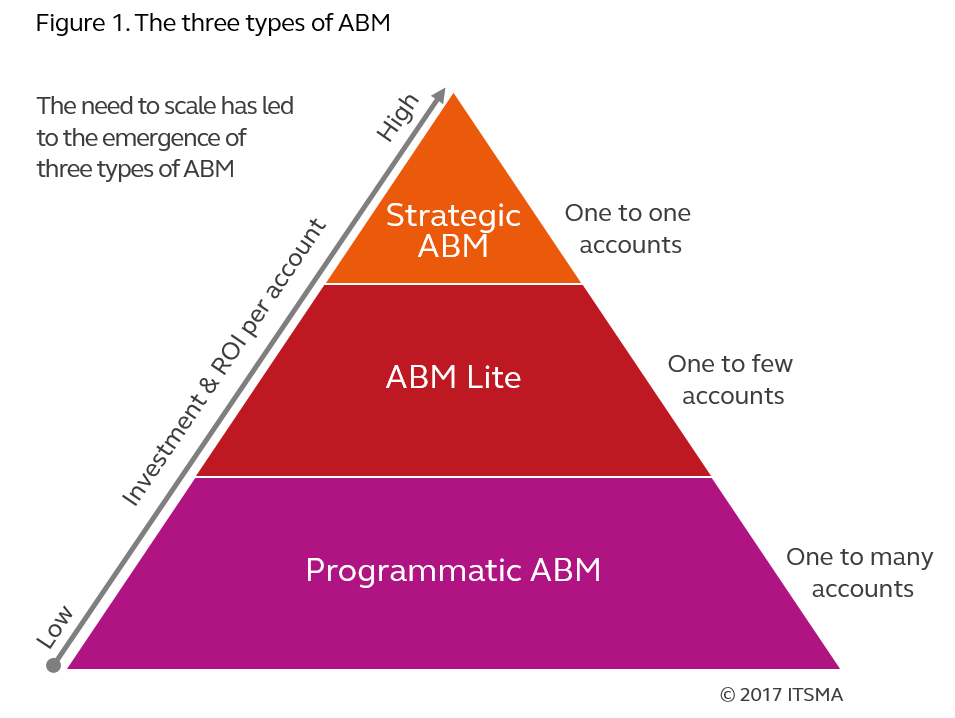
- Strategic ABM: One-to-One
Creating and executing highly-customized marketing plans for individual accounts. Highly targeted marketing interactions that demonstrate an in-depth understanding of their business issues.

Top tactics for the one-to-one approach:
- Face-to-face meetings
- Executive relationship programs
- Direct mail
- Custom content (videos, webinars, podcast)
2. ABM Lite: One-to-Few
Creating and executing lightly-customized programs for clusters of accounts with similar issues and needs. Marketing programs and campaigns are typically focused on small groups of accounts rather than individual accounts.

Top tactics for the one-to-few approach:
- Email marketing
- Direct email webinars
- Custom content (videos, webinars, podcast)
- Website personalization
- Events
3. Programmatic ABM: One-to-Many
Leveraging technology to tailor marketing campaigns for specific named accounts at scale. Some tools of the trade for Programmatic ABM include IP targeted advertising, physical mail, and gifting integrated with your marketing automation.

Top tactics for the one-to-many approach:
- Email marketing
- Targeted digital ads
- Events
- Webinars
- Paid social
- Account-based content marketing
Every ABM program reaches a point where a mix of practices becomes necessary to achieve the right balance of breadth and depth.
List of Account-Based Marketing Tools
ABM tools are positioned as full-service platforms.
- Engagio
- 6Sense
- Adobe Campaign
- Uberflip — Content experiences
- Terminus
- Bound
- Triblio
- Integrate
- Zymplify
- Madison Logic
- Snitcher
- Listenloop
- PathFactory
(P.S – To get a detailed knowledge of these tools, continuing reading the next article)
Account-Based Marketing (FAQs)
How Does Account-Based Marketing Works?
A guide to setting up account-based marketing:
- Identify your high-value target accounts
- Conduct research on those accounts
- Develop customized marketing campaigns
- Run your customized marketing campaigns
- Measure your customized marketing campaigns
- Create content that is customized for the target accounts.
- Track KPIs that will accurately gauge your account penetration.
Account-based marketing can also be integrated with your CRM and marketing automation tool to run campaigns targeting your target accounts. It can run multichannel campaigns by choosing the ads to show a target audience across mobile, social, display, and video.
With ABM software you can conduct marketing across various personas, sales stages, campaigns, or statuses in a CRM, making it easy to engage with your target buyers wherever they are online.
Metrics to Track
The metrics for ABM are different than the metrics for traditional or inbound marketing strategies.
Here are some KPIs to consider
- Conversions: Are you converting traffic from the account into known contacts?
- Engagement: Breadth of engagement across the account is usually more valuable than the depth of engagement with only 1-2 contacts.
- People: Are the right people at the account spending time with your company?
- Awareness: Do your target accounts demonstrate awareness?
- Appointments: Is Sales finding it easier to get appointments in the target account?
- Coverage: Do you have the right contacts at the key accounts?
Who Uses Account-Based Marketing?
Many companies, that are trying to seek high value customers, acquire ABM strategy rather than taking a broad-reaching approach to their sales and marketing effort.
ABM is especially useful for businesses that sell high dollar items. It is designed to be far more targeted than traditional advertising programs and requires you to spend more to reach a single individual.
Let’s illustrate this with an example
Two companies having the worth of a sale of – $20,000 and $500 respectively.
To hit a revenue goal, the first company would need far fewer clients than the second. The first company would need a much smaller pool of people who could purchase from them and need to spend far longer nurturing relationships and convincing them to buy.
Therefore, the first company would benefit from being highly targeted in who they are marketing to with ABM.
On the other hand, the other company would do much better focusing on selling a high volume of their $500 products and spending less time during the sales process convincing people to purchase.
This is where the ABM strategy works better. It is designed to be far more targeted than traditional advertising programs and requires you to spend more to reach a single individual.
How To Run An Account-Based Marketing Campaign?
When you work across your organization to develop integrated campaigns that address the needs of your target accounts, the ABM initiative is a good start.
Steps to build your ABM campaigns:
- Understand your audience
- Coordinate a set of ABM program
- Initiate sales team follow-ups
- Measure across the funnel
- Use technology to scale your effort
ATTRACT—>NURTURE—>GROW
How To Create An Account-Based Marketing Team?
To execute an account-based strategy, B2Bs must consider the following factors:
- Manage their data
- Align with sales
- Get buy-in from executive leadership
- Select high-value accounts
- Perform deep background research
- Create custom content
- Develop bespoke buyer journeys for target accounts
Keep Marketing and Sales aligned can be very effective. In terms of account-based marketing, alignment will ensure your marketing and sales teams are focused on the same goals, stick to the mutually-agreed-upon budget, and understand the specific roles of each internal stakeholder.
Your sales team will be balancing their time between inbound leads and their ABM efforts, but interacting with those targeted leads once they come into the funnel is all about timing.
The deals that come from an ABM strategy are complex and you will have invested a lot of time into them. You don’t want to risk losing out on one by having an inexperienced rep manage the account.
This point needs to be managed beforehand.
Account-based marketing Examples:
1. Lunch and Learns
Instead of simply inviting prospects to attend your webinar or masterclass, why not send a pizza, lattes, and donuts, or a catered lunch for prospects to enjoy with the show?
Lunch and learns can be done with anything from coffee to a food item of their choice, so you can wine and dine your prospects from the comfort of their own desks.
This approach can be useful across the account lifecycle from initial engagement to upcoming renewals, expansion, or even re-engage at-risk accounts.
How To Do a Lunch-and-Learn?
- Cover light topics.
- Invite employees to submit their own ideas.
- Offer food and beverages.
- Schedule appropriately.
- Create a learning objective.
- Find a good presenter.
- Provide a post-event space.
- Consider your remote employees
This strategy boosts attendance rates and improves attentiveness. It was also noted that attendees remained connected throughout the entire webinar.
2. Leveraging Social Media
Social selling is a staple to many sales development and demand generation strategies. ABM and social selling used correctly can be two sides of the same coin – the goal of both is to engage with prospects who are most likely to do business with you.
3 Critical areas of ABM development:
1. Selecting and Prioritizing Accounts
- Gain insights into the markets and craft more compelling content and campaigns.
- Prioritize the most important accounts for ABM investment.
- Focus just on your list of target customers
2. Building the Right Relationships
- Go beyond your own social profile.
- Watch trends, not just what’s happening on any particular day.
3. Supporting Sales
- Help with research and social listening for those specific accounts
- Track connections and engagement
- Practice to share the data back with the team
- Develop trusted relationships with key accounts for long-term growth and success.
One of the biggest challenges with social ABM is that managing multiple conversation threads and knowing the right thing to share with the right person at the right time can be time-consuming and mostly manual.
Avoiding the direct sales pitch through this channel is still important. In order to help you leverage social selling in your ABM program, you’ll have to modify your social strategy.
About the author
Everyone at BigRadar contributes to the blog.
- BigRadar Teamhttps://bigradar.io/blog/author/bigradar/
- BigRadar Teamhttps://bigradar.io/blog/author/bigradar/
- BigRadar Teamhttps://bigradar.io/blog/author/bigradar/
- BigRadar Teamhttps://bigradar.io/blog/author/bigradar/
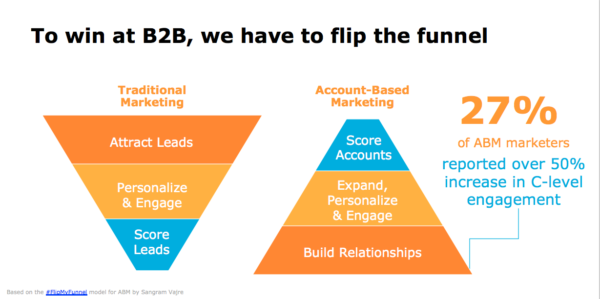
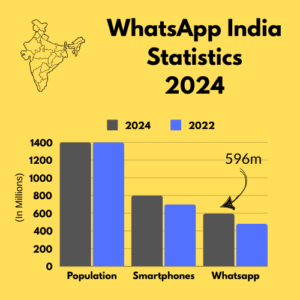
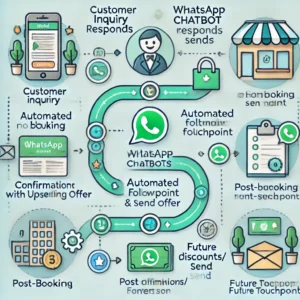
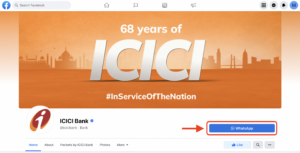
2 thoughts on “Account-based marketing tactics 2020”
are there any b2b statistics available for ABM 2020 or before?
Thanks Kevin. ITSMA and other reliable sources below link provides you quite relevant information on ABM B2B Statistics.
https://martechseries.com/sales-marketing/account-based-marketing/10-abm-stats-fingertips/